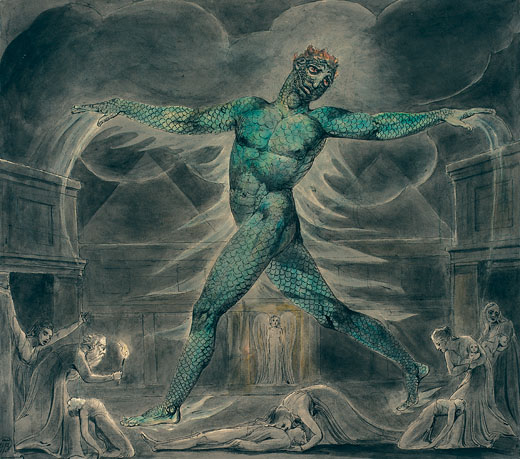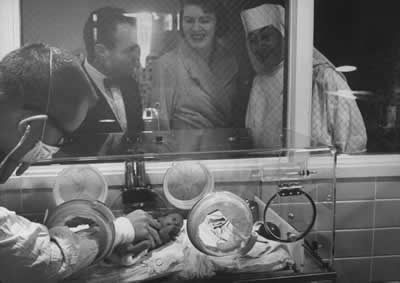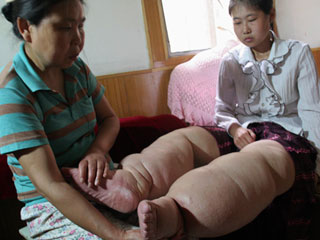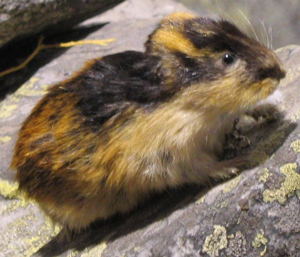General
1999 interview here at Berkeley (includes link to YouTube version): Art & Healing (http://globetrotter.berkeley.edu/people/Ōe/)
Rare photo — Ōe in 1955: http://www.photoshelter.com/image/I0000Ih.cgMeckuE
Rare photo — A younger Ōe:
Ōe at Berkeley 1999
Ōe at Nanjing Massacre Memorial Hall, 2006 (LIFE Magazine here http://www.life.com/image/71861434)
Oe on the 東日本大震災 (Eastern Japan Disaster — earthquake, tsunami, nuclear reactor accident)
This was published in the The New Yorker March 28, 2011: Tokyo Postcard: History Repeats
芽毟り仔撃ち Nip the Buds, Shoot the Kids
On the title
This novel's title is a bit difficult. It is noun-verb, noun-verb. Both verbs are in the 連用形 which is nominalizing the verb. So: "The act of mushiru-ing me, the act of utsu-ing ko."
Mushiru means "to pluck": むしる【毟る】(1)はえているものを引き抜く。「鳥の毛を―・る」(2)指先などでつまんではがす。魚などの身をほぐす。「魚を―・って食べる」「柴栗を―・り―・りつつ歩行くに/日光山の奥(花袋)
Utsu here means "to shoot" such as when hunting an animal: うつ【撃つ】〔「打つ」と同源〕(「射つ」とも書く)矢や弾を発射する。また、矢や弾で相手や獲物を殺傷する。「鉄砲を―・つ」「鳥を―・つ」
Me and ko are both young things: new growth of a plant and young offspring of an animal.
The English translation title is making a wordplay that is not all that strong in the original, but hinted at, overlaying young children with young goats/sheep in the word "kid".
芽毟り仔撃ち Nip the Buds, Shoot the Kids
Chapter titles
1: “Arrival” (到着 Touchaku)
2: “The First Little Task” (最初の小さな作業 Saisyo no chiisana sagyou)
3: “The plague’s onslaught/exodus” (襲いかかる疫病と村人の退去 Osoikakaru ekibyou to murabito no taikyo)
4: “Closure” (閉鎖 Heisa)
5: “Solidarity of the abandoned” (見棄てられた者の協力 Misuterareta mono no kyouryoku)
6: “Love” (愛 Ai)
7: “The Hunt and the festival in the snow” (猟と雪のなかの祭 Kari to yuki no naka no matsuri)
8: "Sudden outbrake of disease and panic" (不意の発病と恐慌 Fui no hatsubyou to kyoukou)
9: "The return of the villagers and the slaughter of the soldier" (村人の復帰と兵士の屠殺 Murabito no fukki to heishi no tosatsu)
10: “Trial and abandonment” (審判と追放 Shinpan to tsuihou)
芽毟り仔撃ち Nip the Buds, Shoot the Kids
General — Lord of the Flies, William Golding (1958)
The below comments are by Athena, just as she sent them:
This novel is often compared to William Golding's Lord of the Flies. There is speculation that Oe drew inspiration from this novel and author, but I don't know if that's true. Lord of the Flies was Golding's first novel, published in 1954, while MEMUSHIRI was Oe's first novel, published in 1958. Golding was 43 and Oe was 23.
Lord of the Flies explores themes similar to MEMUSHIRI, including groupthink, INDIVIDUAL / GROUP, morality, rationality, and HUMAN WEAKNESS.
Here is a brief comparison of the two plots from a book blog:
"I am sure that anybody who read both novels would see a lot of similarities. British vs Japanese boys. The British boys in the jungle while the Japanese boys in a far-flung village. Both were left alone to fend for themselves. The British boys, who were some of the survivors of the sunken ship amidst nuclear war, tried to govern themselves and in the process failed due to their self-imposed rules which are founded on ignorance (innocence), selfishness and savagery. The Japanese boys, who were sent there as part of the reformatory program of the government during WWII, have external tormentors: the villagers who had to flee and leave them behind because of the onslaught of plague. When the adult rescuers found the British boys in the island, they saved them. When the adult villagers went back after the plague they scrambled to cover their acts by further tormenting the poor Japanese boys." [WALLACE: I would just like to insert here that the plague, or, rather, the belief of its existence, IS an internal threat.]
Perhaps some of the biggest distinctions between the two novels include: in Lord of the Flies, the group of boys savagely murder one of their own (Simon, the character representing innocence and goodness, maybe aligned with MEMUSHIRI's little brother). Another boy (arguably an analogue for characters in MEMUSHIRI like the Korean boy, or maybe the girl), Piggy, is also murdered. The character closest to MEMUSHIRI's narrator is hunted by the group of boys rather than adult villagers, but is saved from murder when the group is found and saved by the British navy.
(Thank you Athena!)
Wallace Sept 2020 note: "The latter [Lord of the Flies], written in 1954, sold only a few copies upon publication and was not reprinted until the early 1960s, at which point it became enormously popular. This 1958 novel appears to have sprung independently from completely different inspirations." (Mary Whipple blog entry Jan 19, 2011 "Kenzaburo Oe–NIP THE BUDS, SHOOT THE KIDS" http://marywhipplereviews.com/kenzaburo-oe-nip-the-buds-shoot-the-kids-japan/)
芽毟り仔撃ち Nip the Buds, Shoot the Kids
General — Treatment of Japanese children during WWII
The treatment of Japanese children during the war was abominable, and this is precisely what Oe is referencing in MEMUSHIRI. One of the most notable examples of child neglect during and after the war is the treatment of the wartime orphans.
The wartime orphans were children who either lost or were separated from their families in the chaos of WWII, primarily from the air raids that bombarded the mainland toward the end of the war. Relegated to living in train stations or parks, these kids were referred to as 駅の子 (eki no ko): station children. By 1948, there were over 120,000 of these children all over Japan (not counting Okinawa). These orphans not only had to endure poverty and loss, but also intense stigma and scorn from the rest of Japanese society. The Japanese had no real avenues for helping all these homeless children; often times they would send them to distant relatives who usually didn't want them or to facilities. Especially after the war, there usually weren't even facilities to house them, so officials would lock them in cages like animals (see the connection to MEMUSHIRI?). Most notably (and probably the most relevant to our analysis of MEMUSHIRI), according to John W. Dower in Embracing Defeat: Japan in the Wake of WWII, whenever the police or other officials would round up these children, they would count them as animals (一匹、二匹, etc.) rather than as people. The orphans were, much like the reformatory boys in the story, considered as little more than vermin. (I read excerpts from this book in freshman year, but I no longer have those files anymore, so a summary from a blog I found will have to do.) The orphans were so reviled by Japanese society that they were also given the derogatory term 浮浪児 (furōji): street urchin, vagrant, throwaway.
The wartime orphans were not only scorned and discriminated against, but they carried with them a stigma of their pasts for their whole lives. This stigma persisted far after the war ended--according to the Japan Times, NHK and other Japanese broadcasting programs only started talking more openly about the wartime orphan crisis around 2012, and it was around that time that people began to dig more deeply into exactly what happened to these children. Even with more public attention and support, however, many of those who were once orphans were reluctant to come forward--understandably, after childhoods defined by poor treatment.
Here are all the relevant links and sources I used (some are in Japanese, so hopefully that won't be an issue!):
- Japan Times article: "Japan media begins to break the war orphan taboo"
- NHK Special Synopsis: "駅の子"の闘い:語り始めた戦争孤児 (the special itself is here, but it's almost 50 minutes long, so I'm not sure you'll want to include this)
- Asahi Shin-bun article: 戦争孤児12万人、どこへ 妻子にも口閉ざし生きてきた (This article requires a subscription, so I couldn't read all of it, but I found the parts that are available to be useful!)
- Wordpress blog post: "Recommended Reading about Japanese culture" (Only the fifth book he recommends is important)
(Thank you Miki!)
芽毟り仔撃ち Nip the Buds, Shoot the Kids
Chpt 1 (21) — "umber [代赭色、たいしゃいろ] river"
The color is #bb5522: http://www.colordic.org/colorsample/2234.html
芽毟り仔撃ち Nip the Buds, Shoot the Kids
Chpt 1 (22) — "faint leaf shadows on the dark brown [褐色、かっしょく] earth"
The color is #8a3b00: http://www.colordic.org/colorsample/2225.html
個人的な体験 A Personal Matter
Chpt 1 (8) — "...youngsters in identical silk jackets embroidered with gold-and-silver brocade dragons, the Hong Kong souvenir variety designed for American tourists"
The Hong Kong bit throws me off, because I feel like he's referring to the Japanese sukajan souvenir jackets that became popular post-WWII among American soldiers. Later, it became a statement piece of the "Yankee" fashion style, which I believe carried connotations of delinquency and non-conformity, in line with the "gang" dynamic in KOJIN. I've heard it called Japan's version of the punk fashion movement."
Thanks Athena!
個人的な体験 A Personal Matter
Chpt 1 (9) — Iron Maiden
個人的な体験 A Personal Matter
Chpt 2 (24) and many other times in the text — Apollinaire
The below is from: Foundation, Poetry. “Guillaume Apollinaire.” Poetry Foundation, Poetry Foundation, 26 Sept. 2020, https://www.poetryfoundation.org/poets/guillaume-apollinaire.
Guillaume Apollinaire is considered one of the most important literary figures of the early twentieth century. His brief career influenced the development of such artistic movements as Futurism, Cubism, Dadaism, and Surrealism, and the legend of his personality—bohemian artist, raconteur, gourmand, soldier—became the model for avant-garde deportment. Although some critics hesitate to rank him with the greatest poets of the century, ... Shortly before Apollinaire died, author Jacques Vache wrote to Andre Breton, the leader of the Surrealist movement: "[Apollinaire] marks an epoch. The beautiful things we can do now!"
According to most sources, Apollinaire was born in Rome, the illegitimate son of a Polish woman and an unidentified man...Apollinaire was intrigued by, and tended to associate with, those who appeared challenging or antagonistic toward bourgeois society; this inclination probably led to his six-day imprisonment in 1911 when he was wrongly suspected of being connected with the theft of the Mona Lisa. In 1914 he joined the French army, volunteering to defend his adopted country in World War I. Although initially a member of an artillery division that was relatively safe from active combat, he soon volunteered to fight at the front with the infantry. He suffered a head wound in 1916 and was sent back to Paris, where he saw the staging of his drama Les mamelles de Tiresias: Drame surrealiste (The Breasts of Tiresias). This play, the subtitle of which was later adopted by a group of artists and writers known as the Surrealists, established a model for advanced avant-garde theater and influenced such authors as Tristan Tzara, the titular leader of the Dada movement, and Andre Breton. In 1917 Apollinaire delivered the lecture "L'esprit nouveau et les poetes," a modern art manifesto in which he called for pure invention and a total surrender to inspiration. Apollinaire, weakened by the wound from which he never fully recovered, died of influenza two days before Armistice Day.
個人的な体験 A Personal Matter
Chpt 3 (19) & Chpt 6 (70)— Double Eagle (Wagner)
"Under the Double Eagle March". This is a piece that I think you will know, once you hear it. This YouTube is very cool: it is an LP version, and a English-Japanese print.
YouTube: https://www.youtube.com/watch?v=3uHQVN0a2IQ
Thanks Derek!
If the link is dead, just google the song title + Wagner.
個人的な体験 A Personal Matter
Chpt 3 (35) — Johnnie Walker (whiskey)
I don't think it is a coincidence that Ōe decides to mention a whiskey brand rather than just a bottle of whiskey. Johnnie Walker was the Whiskey of his day, to be sure, but the icon on the label, the adventurous "Johnnie Walker" fits nicely into Bird's fantasy of adventures in Africa, too. The label depicted below is a contemporary one, but as best as I can tell some version of this icon has been on the label for a very long time and is likely to be quite close to what Ōe has in mind.
Thank you Howard!
Optional material: Here's a history of the icon, just as random fun information, if you are interested: Character study – Johnnie Walker. And here is a short YouTube of Johnny Walker walking: Johnnie Walker - The Man Who Walked Around The World
個人的な体験 A Personal Matter
Chpt 3 (page) — Comment on Himiko's name
“When it was her turn to stand and introduce herself, she had challenged the class to guess the source of her unusual name: Himiko—fire-sighting-child. Bird had answered, correctly, that the name was taken from the Chronicles of the ancient province of Higo—The Emperor commanded his oarsmen, saying: There in the distance a signal fire burns; make for it straightaway. After that, Bird and the girl Himiko from the island of Kyushu had become friends.” Excerpt From: Kenzaburo Ōe. “A Personal Matter.” iBooks.
火見子 (From Wiki on "Himiko: https://en.wikipedia.org/wiki/Himiko) Himiko or Pimiko (卑弥呼, d. ca. 248) was an obscure shaman queen of Yamataikoku in ancient Wa (Japan). Early Chinese dynastic histories chronicle tributary relations between Queen Himiko and the Cao Wei Kingdom (220-265), and record that the Yayoi period people chose her as ruler following decades of warfare among the kings of Wa. Early Japanese histories do not mention Himiko, but historians associate her with legendary figures such as Empress Consort Jingū, who was Regent (ca. 200-269 ) in roughly the same era as Himiko. Yamato Totohi Momoso himemiko (倭迹迹日百襲媛命), the shaman aunt of Emperor Sujin, supposedly committed suicide after learning her husband was a trickster snake-god. The Kojiki does not mention her, but the Nihon Shoki describes her as "the Emperor's aunt by the father's side, a shrewd and intelligent person, who could foresee the future" (tr. Aston 1924:156).
個人的な体験 A Personal Matter
Chpt 3 (37) — Himiko's used MG
Original image at: http://en.wikipedia.org/wiki/MG_MGA
There is another car that started production in 1961 (http://en.wikipedia.org/wiki/MG_Midget)
but based on the dilapidated condition of Himiko's MG and the fact that the MGA was primarily produced to be exported, I have a feeling that she drove the MGA and not the Midget. I've driven in both cars before, they are not comfortable. The driver cannot even shift gears without hitting the passenger in the knee, and the wind noise is so loud because of the poorly fitting roof that a normal conversation is quite difficult.Thanks Derek!
個人的な体験 A Personal Matter
Chpt 4 (page 39 in English translation) — "'I was thinking about this pluralistic universe.'"
I spent some time trying to track down the origins of this idea. It turns out that there are complicated debates about pluralism within several philosophical traditions and fields, and especially within logic, but the phrase "pluralistic worlds" in the sense that Himiko explains it can, I think, be traced to William James's A Pluralistic Universe (1909). I've tried to sample a part that summarizes the view from a few pages before the end.
"Pragmatically interpreted, pluralism or the doctrine that it is many means only that the sundry parts of reality may be externally related. Everything you can think of, however vast or inclusive, has on the pluralistic view a genuinely 'external' environment of some sort or amount. Things are 'with' one another in many ways, but nothing includes everything, or dominates over everything. The word 'and' trails along after every sentence. Something always escapes. 'Ever not quite' has to be said of the best attempts made anywhere in the universe at attaining all−inclusiveness. The pluralistic world is thus more like a federal republic than like an empire or a kingdom. However much may be collected, however much may report itself as present at any effective centre of consciousness or action, something else is self−governed and absent and unreduced to unity."
Thank you Anthony!
個人的な体験 A Personal Matter
Chpt 4 (43) — The William Blake painting in Himiko's apartment
“William Blake. You remember, I wrote my thesis on him.”
Vanessa located the Blake painting from an online catalogue of artwork at an exhibition at London's Tate Museum titled "Gothic Nightmares: Fuseli, Blake and the Romantic Imagination" Feb 15-May 1, 2006. The below is from Room 7: "Revolution, Revelation, Apocalypse".
The theme of this painting is, of course, directly relevant to the narrative.
"William Blake
Pestilence: Death of The First Born circa 1805
Pen and watercolour over pencil on paper, 304 x 342 mm
Lent by the Museum of Fine Arts, Boston: Gift by subscription"Museum of Fine Arts, Boston—Pestilence: Death of the First Born
(If the above link is broken, go here.)
Chuck also located this painting and you can see it with zoom capacity The AMICA Library (using a Cal computer or proxy). He adds these notes: "The looming creature in the center of the painting is 'Pestilence' -- the 10th plague God delivered unto the Egyptians before the Exodus of the Jews. This 'pestilence' kills the first born sons of the Egyptians. Bird's wondering who this creature is / what the painting represents seems then to be an embodiment of his predicament about having to make a choice whether or not to let his son die."
Athena adds to this —
"'Sooner murder an infant in its cradle than nurse unacted desires.'"
This quote comes from William Blake's prose-poem "The Marriage of Heaven and Hell" (1790-1793). It is one of Blake's most notable works. It is a satirical attack on orthodox religion, written in a style that imitates biblical prophecy. (http://www.enotes.com/topics/marriage-heaven-hell/critical-essays)
The specific section the quote comes from is the "Proverbs of Hell," meant to imbue wisdom — perhaps of questionable value — similar to the Bible's "Book of Proverbs." The full text of this particular poem can be found here: http://www.levity.com/alchemy/blake_ma.html
個人的な体験 A Personal Matter
Chpt 5 (63) — Bird's Hemingway passage before becoming ill in front of his students
"I undressed in one of the bath-cabins, crossed the narrow line of beach and went into the water. I swam out, trying to swim through the rollers, but having to dive sometimes. Then in the quiet water I turned and floated. Floating I saw only the sky and felt the drop and lift of the swells. I swam back to the surf and coasted in, face down, on a big roller, then turned and swam, trying to keep in the trough and not have a wave break over me. It made me tired, swimming in the trough, and I turned and swam out to the raft. The water was buoyant and cold. It felt as though you could never sink. I swam slowly, it seemed like a long swim with the high tide, and then pulled up on the raft and sat, dripping, on the boards that were becoming hot in the sun." (Hemingway, The Sun Also Rises (1926), Chapter 19, p 241)
Ernest Hemingway (1899-1961) — Hemingway produced most of his work between the mid-1920s and the mid-1950s, and won the Nobel Prize in Literature in 1954. The protagonist is Jake Barnes, an expatriate American journalist living in Paris. Jake suffered a war wound that left him impotent." (Wiki) He is a drinker.
If there is someone who wants to check this article for useful content for us, please volunteer: "Different Exponent of Existentialism: E. Hemingway and Kenzaburo Oe" Journal of Zhejiang Normal University (in Chinese, I think). The abstract reads: "This article, beginning with the statement of existential concepts 'the world is absurd', 'selection of liberty' and 'responsibility', is intended to compare the different expositions of the above concepts in the works of Hemingway and Kenzaburo Oe, and concludes with the identification of their similarities and differences between Oriental and Occidental existentialism and their different pursuits towards the values for existence of man."
個人的な体験 A Personal Matter
Chpt 5 (63) — Hemingway's Green Hills of Africa
Bird says Green Hills of Africa is one of his favorites of Hemingway. Published in 1935, Green Hills of Africa is an autobiographical work documenting the one month Hemingway and his wife spent on safari in East Africa in 1933. The work describes Hemingway's hunting travels and includes reflections (sometimes in conversation) about literature and authors. (Thanks Athena!)
The below source has an interesting article on Hemingway's work. You can follow the link, or find a PDF of the article in our "other scholarship" file on bCourse.
A quote to get a sense o the language there, which is truly "colorful": "[T]he hyena, hermaphroditic, self-eating devourer of the dead, trailer of calving cows, ham-stringer, potential biter-off of your face at night while you slept, sad yowler, camp-follower, stinking, foul, with jaws that crack the bones the lion leaves, belly dragging, loping away on the brown plain, looking back, mongrel dog-smart in the face…"
Or how flowing it can be: "It was a green, pleasant country, with hills below the forest that grew thick on the side of a mountain, and it was cut by the valleys of several watercourses that came down out of the thick timber on the mountain. Fingers of the forest came down onto the heads of some of the slopes and it was there, at the forest edge, that we watched for rhino to come out. If you looked away from the forest and mountain side you could follow the watercourses and the hilly slope of the land down until the land flattened and the grass was brown and burned and, away, across a long sweep of country, was the brown Rift Valley and the shine of Lake Manyara."
These literary masterstrokes matter to Oe, too.
Cosgrove, Benedict. “Hemingway’s Messy Legacy Gets Messier.” The Daily Beast, 18 July 2015. www.thedailybeast.com, https://www.thedailybeast.com/articles/2015/07/18/hemingway-s-messy-legacy-gets-messier.
個人的な体験 A Personal Matter
Chpt 6 (70) — the baby's incubator
original 1963 image at: Life images, Pediatrician Dr Ralph Shugart
Thanks Derek!
個人的な体験 A Personal Matter
Chpt 10 (117) — My Life in a Bush of Ghosts
From: Amos Tutuola
Amos Tutuola (1920-1997)
Nigerian writer, who gained world fame with his story THE PALM-WINE DRINKARD. "I was a palm-wine drunkard since I was a boy of ten years of age," Tutuola started the novel. "I had no other work more than to drink palm-wine in my life." The book was based on Yoruba folktales, but in his own country Tutuola was accused of falsifications and uncivilized language. The novel is a transcription in pidgin English prose of an oral tale of his own intervention. It recounted the mythological tale of a drunken man, who follows his dead tapster into "Deads' Town", a world of magic, ghosts, demons, and supernatural beings. According to the Nigerian novelist Chinua Achebe, Tutuola's works can also be read as moral tales commenting Western consumerism: "What happens when a man immerses himself in pleasure to the exclusion of all work?"
In spite of the success and critical acclaim of the novel, Tutuola did not think himself as an author. For a long period he did not read or even own books. In the 1950s Tutuola wrote MY LIFE IN A BUSH OF GHOSTS (1954), an underworld odyssey, in which an eight-year-old boy, abandoned during a slave raid, flees into the bush, "a place of ghosts and spirits". The next twenty-four years he spents wandering in a spirit world, longing to return to his earthly home. Oumar Doduo Thiam saw in Presénce Africaine that the work is the "expression of ghosts and of African terror, alive with humanity and humility, and extraordinary world where the mixture of Western influences are united, but one always without the least trace of incoherence." Brian Eno and David Byrne took the title of the book for their 1981 album.
(emphasis mine)
個人的な体験 A Personal Matter
Chpt 10 (page 119 in English translation) — “‘These deeds must not be thought after these ways,’ Bird, ‘so it will make us mad."
Himiko draws comparison to Lady Macbeth from the first scenes, but the resemblance is only made explicit in the last third of the book. I wonder if Oe saw Kurosawa Akira’s adaptation of Macbeth 蜘蛛巣城 (Throne of Blood) (1957), which also aims to translate Lady Macbeth to a Japanese cultural landscape.
First, Himiko quotes Lady Macbeth’s words right after Macbeth commits regicide, so that he can become king himself:
Lady Macbeth: Consider it not so deeply.
Macbeth: But wherefore could not I pronounce 'Amen'?
I had most need of blessing, and 'Amen'
Stuck in my throat.Lady Macbeth: These deeds must not be thought
After these ways; so, it will make us mad. (Macbeth, II.ii)I think Oe also wants us to think of the “unsex me” soliloquy, where Lady Macbeth seeks to liberate herself from the weaknesses of her gender as she perceives them, so as to then help her husband commit the act of murder:
The raven himself is hoarse
That croaks the fatal entrance of Duncan
Under my battlements.
Come, you spirits
That tend on mortal thoughts, unsex me here,
And fill me from the crown to the toe top-full
Of direst cruelty! make thick my blood;
Stop up the access and passage to remorse,
That no compunctious visitings of nature
Shake my fell purpose, nor keep peace between
The effect and it! Come to my woman's breasts,
And take my milk for gall, you murdering ministers,
Wherever in your sightless substances
You wait on nature's mischief!
Come, thick night,
And pall thee in the dunnest smoke of hell,
That my keen knife see not the wound it makes,
Nor heaven peep through the blanket of the dark,
To cry 'Hold, hold!' (Macbeth, I.iv)Thank you Anthony!
個人的な体験 A Personal Matter
Chpt 10 (page 121 in English translation) — elephantiasis
(original image here) Thanks Lisa!
個人的な体験 A Personal Matter
Chpt 10 (page 129 in English translation) — Kafka's letter to his father (and his connection to Theosophy)
For access to portions of Kafka's letter see, for example, https://www.brainpickings.org/2015/03/05/franz-kafka-letter-father/
We can entertain the thought that Ōe's interest in Kafka reaches beyond the specific point of one's responsibility towards a child and into a broader sense of responsibility as a husband and, indeed, simply as what constitutes a "good" person —
from The Psychoanalytic Study of the Child edited by Robert A. King, Peter B. Neubauer, Samuel Abrams, A. Scott Dowling (Yale University Press, 2008), page 323:
With this preface he engages the crucial issue of marriage "that ... high step which is impossible for him to climb even by exerting all his strength, that step which he cannot get up and which he cannot get past eitJ1er." For him "n1arry in g, founding a fa1nily, accepting all the children that come, supporting them in this in secure world, and even guiding them a little as well, is the utmost a human being can do at all." This is what he feels hi s father did not do for him; his father did not rear him to fulfill this role.
He asks him self why he did not marry. In response he describes the agonies h e suffers when he faces that step: he can no longer sleep, hi s head burns day and night, life can n o longer be called life, he staggers about in despair. It is not the worries that bring this about. The worries are "like worms con1pleting the work on the corpse." The decisive blow comes from "the general pressure of anxiety, of weakness, of self-contempt." Trying to explain this more fully he brings the parricidal conflict closer to conscious awareness: marriage would be the most acute form of self-liberation and independence; he would achieve the highest thing and would be the equal of his father; sha1ne and tyranny would be n1ere hi story. He likens him self to a prisoner who wants to escape and at the same time rebuild s the prison as a pleasurable place for him self. Marrying would be the greatest thing of all and would provide the most honorable independence but at the same time it is in the closest relation to father , so that getting out of the prison has a touch of madness about it
from Butterfly, the Bride: Essays on Law, Narrative, and the Family by Carol Weisbrod (University of Michigan Press, 2009), page 80:
Kafka was never able to marry. He certainly engaged in sexual relations with women-though sex, like everything else, became ultimately quite secondary to his writing. It probably cannot be known for certain whether he had an illegitimate son who died at seven, or whether his relationship with Milena (a Czech writer) had a physical dimension. Kafka's idea of marriage shows a merger of the several levels. Marriage involves a state directive, a Jewish dimension, a level specific to his father (relating to social standing), and finally a level specific to Kafka. For Kafka, marriage meant much more than companionship or psychological or physical intimacy. It was an institution of ultimate value.
Marrying, founding a family, accepting all the children that come, supporting them in this insecure world and perhaps even guiding them a little, is, I am convinced, the utmost a human being can succeed in doing at all. That so many seem to succeed in this is no evidence to the contrary; first of all, there are not many who do succeed, and second, these not-many usually don't "do" it, it merely "happens" to them; although this is not that utmost, it is still very great and very honorable (particularly since "doing" and "happening" cannot be kept clearly distinct). And finally, it is not a matter of this Utmost at all, anyway, but only of some distant but decent approximation; it is, after all, not necessary to fly right into the middle of the sun, but it is necessary to crawl to a clean little spot on Earth where the sun sometimes shines and one can warm oneself a little.
There is, with Kafka, too, a connection to Theosophy:
The Mystical Life of Franz Kafka: Theosophy, Cabala, and the Modern Spiritual Revival by June O. Leavitt
ABSTRACT This book aims to show that the “Kafkaesque” in Franz Kafka may be immediate or residual impressions of the clairvoyance which Kafka admitted he suffered from: Those aspects of his writings in which the solid basis of human cognition totters, and objects are severed from physical referents, can be understood as mystical states of consciousness. However, this book also demonstrates how the age in which Kafka lived shaped his mystical states. Kafka lived during the modern Spiritual Revival, a powerful movement which resisted materialism, rejected the adulation of science and Darwin and idealized clairvoyant modes of consciousness. Key personalities who were Kafka’s contemporaries encouraged the counterculture to seek the true essence of reality by inducing out-of-body experiences and producing spiritual visions through meditative techniques. Most importantly, they inspired the representation of altered perception in art and literature. Leaders of the Spiritual Revival also called for changes in lifestyle in order to help transform consciousness. Vegetarianism became essential to reach higher consciousness and to return humanity to its divine nature. It is no surprise that Kafka became a vegetarian and wrote several important narratives from an animal’s point of view. Interweaving the occult discourse on clairvoyance, the divine nature of animal life, vegetarianism, the spiritual sources of dreams, and the eternal nature of the soul with Kafka’s dream-chronicles, animal narratives, diaries, letters, and stories, this book takes the reader through the mystical textuality of a great psychic writer and through the fascinating epoch of the great Spiritual Revival.
個人的な体験 A Personal Matter
Chpt 11 (page 139 in English translation) — "’...we . . . our dirtying our own hands with the baby’s murder . . . .”
Beginning on page 139, we get debates over whose hands would be dirtied by the murdering of the baby. This is undoubtedly alluding to another famous passage in Macbeth.
Gentlewoman: It is an accustomed action with her, to seem
thus washing her hands: I have known her continue in
this a quarter of an hour.LADY MACBETH: Yet here's a spot.
Doctor: Hark! she speaks: I will set down what comes from
her, to satisfy my remembrance the more strongly.LADY MACBETH: Out, damned spot! out, I say!--One: two: why,
then, 'tis time to do't.--Hell is murky!--Fie, my
lord, fie! a soldier, and afeard? What need we
fear who knows it, when none can call our power to
account?--Yet who would have thought the old man
to have had so much blood in him. (Macbeth, V.i)Thank you Anthony!
個人的な体験 A Personal Matter
Chpt 12 (150) — lemmings
Interesting facts about the lemming myth: http://www.snopes.com/disney/films/lemmings.asp (not sure how relevant it is to the narrative since the metaphor is relying on the falsehood, but still...)
Thanks Lisa!
空の怪物アグイー "Sky-monster Aghwee"
p 13 in English translation — pyorrhea (wife's dental disease)
Pyorrhea refers to an advanced stage of periodontal disease. It is at this stage that the ligaments and bone that support the teeth become inflamed and infected. In most cases it is a result of gingivitis that plaque buildup infects the gums, and can drive a literal wedge between the tooth and gum line. Once these pockets form they can trap food particles that will feed bacteria that is also trapped in them. These pockets can go so deep that they can begin to erode the supporting bone structure and lead to tooth loss. In fact, bone loss from pyorrhea is the primary cause of tooth loss in adults.
original photo at: http://www.oramd.com/images/pyorrhea3w.jpg
Thanks Tema!
空の怪物アグイー "Sky-monster Aghwee"
"we were enveloped by the belling of a pack of hounds." — Rabelais's dogs …
Death by Water (水死, Suishi 2009) | Part One: The Drowning Novel | Prologue: The Joke
These are the final passages from that prologue. Translation 2015 by Deborah Boliver Boehm. (He returns to this scene in the following chapter, too.)
At that, I started to walk toward the uphill road that led to my house. But instead of taking the social cue and saying good-bye, the girl asked me a question. She seemed suddenly preoccupied, and a subtle change in her facial expression appeared to reflect some interior reverie.
“This is about something completely different,” she said, “but I heard that your old French literature professor at Tokyo University translated an epic novel from the sixteenth century— is that right? And apparently the book contains an episode about a man who uses a crazed bunch of dogs to create some kind of riot in Paris?”
“That’s right,” I said. The Life of Gargantua and Pantagruel, by Rabelais. The first volume of what is, indeed, a monumental novel, is called simply Pantagruel. The title character is one of a race of giants, and in one chapter his favorite retainer, Panurge, plays a prank on an aristocratic lady who rejected his attempts to court her. According to the story, Panurge found a female dog in heat and fed her all sorts of delicacies, presumably to enhance her sexual energy. Then he killed the dog and took a certain, um, something out of her insides. He mashed it up, stuffed the resulting pulp into the pocket of his greatcoat, and off he went. He tracked down the snooty Parisian lady and furtively smeared the substance on her dress: on the sleeves, in the folds of the skirt, and so on. Of course, the aroma attracted a huge crowd of male dogs. They all came running and leaped on the lady, and the result was a very unseemly sort of mayhem. I mean, you can imagine what would happen if ‘more than 600,014’ male dogs— the story gives the exact number— were whipped into a frenzy.”
“If the first dog, the one that was killed, was a female, what on earth did the retainer take out of her, um, insides?”
“Well … this is a bit awkward. I mean, it isn’t the sort of word I feel comfortable introducing into a conversation with a young woman I’ve only just met.” I was truly flustered by the question, but at the same time I was also pleasantly reminded of Professor Musumi’s transported expression and exuberant manner of speaking whenever he was illuminating some arcane point for his students. Trying to emulate my late mentor’s happily didactic spirit, I did my best to explain, as delicately as possible, one of the footnotes from my late mentor’s translation of the famous medieval novel.
“It was the uterus of the female dog,” I said. “That organ has been known to scholars since Greek times for its medicinal properties, and I’ve read that medieval sorcerers also used it as an ingredient in magical love potions.”
Without saying another word the girl gave a slight bow, then turned and walked away. I felt curiously refreshed and amused, and I also realized that the request from Unaiko and her colleagues in the Caveman Group had made me much more inclined to act on Asa’s invitation to return to Shikoku, after all these years, and explore the contents of the red leather trunk.
万延元年のフォットボール The Silent Cry (Football in the year 1860)
Go here.
人生の親戚 Echo of Heaven (Relatives in Life)
Go here.
取り替え子(チェンジリング) The Changling
General Background: Itami Juzo suicide
From Wikipedia: He died on December 20, 1997[5] in Tokyo, after falling from the roof of the building where his office was located, after the press published evidence that he was having an extramarital affair. The suicide letter he reportedly left behind denied any involvement in such an affair.[6] One theory is that Itami's suicide was forced by members of the Goto-gumi yakuza faction. A former member of the Goto-gumi faction told journalist Jake Adelstein in 2008, "We set it up to stage his murder as a suicide. We dragged him up to the rooftop and put a gun in his face. We gave him a choice: jump and you might live or stay and we'll blow your face off. He jumped. He didn't live." Juzo Itami is the basis for Goro in the novel. (Thank you Daniel!)
取り替え子(チェンジリング) The Changling
General Background: Takemitsu Toru
One of Oe's friends. A composer. From Wikipedia: Toward the end of his life, Takemitsu had planned to complete an opera, a collaboration with the novelist Barry Gifford and the director Daniel Schmid, commissioned by the Opéra National de Lyon in France. He was in the process of publishing a plan of its musical and dramatic structure with Kenzaburō Ōe, but he was prevented from completing it by his death at 65.[42][43] He died of pneumonia on February 20, 1996, while undergoing treatment for bladder cancer. He is the basis for Takamura in the novel. (Thank you Daniel!)
取り替え子(チェンジリング) The Changling
General Background: Outside Over There by Maurice Sendak
The picture book that Chikashi becomes fixated on in the epilogue of the novel. It depicts a young girl named Ida who has to rescue her little sister after she was kidnapped by goblins and replaced with a changeling. Reading this is essential to understanding Chikashi's thoughts in the epilogue. (Thank you Daniel!)
取り替え子(チェンジリング) The Changling
Tagame (Prologue 1, English 3)
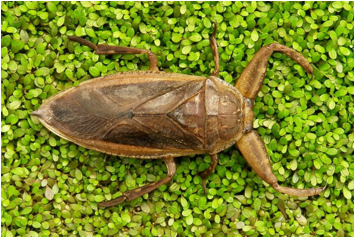
https://c1.staticflickr.com/5/4014/4593033407_f5e82076cf_b.jpg (Thank you Daniel!)
取り替え子(チェンジリング) The Changling
Miniature duralumin trunk (Prologue 2, English 6)
 (Thank you Athena!)
(Thank you Athena!)
取り替え子(チェンジリング) The Changling
"I guess it's really true what they say about crying tears of blood!" (Prologue 4, English 19)
As far as I can tell this is a quote/poem credited to Rumi: "You left and I cried tears of blood. My sorrow grows. Its not just that You left. But when You left my eyes went with You. Now, how will I cry?" (Thank you Athena!)
取り替え子 The Changling
"According to Dante" (Prologue 4, English 26)
I think that Oe is referring to Puragorio, the second part of the Divine Comedy. In it, Dante climbs up the Mount of Purgatory. (Thank you Daniel!)
取り替え子(チェンジリング) The Changling
Rimbaud's Adieu/Farewell (Prologue 4, English 27/28)
This poem will appear again later in the text. This is the last part of a bigger prose poem, A Season in Hell. http://www.mag4.net/Rimbaud/poesies/Farewell.html Kafka and max brod Pg 43 (Thank you Daniel!)
取り替え子(チェンジリング) The Changling
"an etheric double or astral body" (Prologue 6, English 38)
From https://blavatskytheosophy.com/mysteries-of-the-astral-body/ :
"Linga Sharira – called the astral body – is the subtle, unseen "double" of the dense physical body. It is the form, mould, and blueprint upon and around which the dense physical body is built. It comes into existence before the physical body and it only fully fades out and dies when the very last remaining particle of the deceased physical body disappears and disintegrates, excepting the skeleton.
The astral body can also be thought of as the "vital body" or "energy body" of the human being because it is the vehicle through which Prana (the 3rd Principle) flows to the physical body. It is this part of our constitution which is utilised in the activities which have become known as astral travel, astral projection, and so forth. The term "astral" is used in Theosophy simply as a synonym for "subjective," "subtle" or "inner."
Its main connection point with the physical body is in the area of the spleen and these two bodies that we have are connected with one another throughout each lifetime by a sort of unseen umbilical cord which some have called the "silver thread" or "silver cord.""(Thank you Athena!)
取り替え子(チェンジリング) The Changling
"A certain mid-twentieth-century surrealist poet" (Prologue 7, English 45)
I believe this refers to Rene Char, who Oe refers to in name on page 80. Unfortunately I could not find anything about Rene Char in His Poetry, which is referenced on page 80. Perhaps someone with more French knowledge than me in the future could fill it in. (Thank you Daniel!)
取り替え子(チェンジリング) The Changling
Berkeley Birches (Prologue 8, English 56)
I just thought it was cool that he mentioned them here. We can go outside and look at them. (Thank you Daniel!)
取り替え子(チェンジリング) The Changling
"Girl Friday" (Chapter 1-1, English 64)
https://www.merriam-webster.com/dictionary/girl%20Friday : a female assistant (as in an office) entrusted with a wide variety of tasks (Thank you Athena!)
取り替え子(チェンジリング) The Changling
Kenji Miyazawa (Chapter 1-2, English 70)
Kenji Miyazawa was a Japanese poet, but was also a social reformer who tried to make a new kind of farming community. He created the Rasu Farmers Association to improve the lives of peasants in Iwate. You can see a snippet of Outline of the Essential Art of the Peasant here: http://www.kenji-world.net/english/who/reformer.html (Thank you Daniel!)
取り替え子(チェンジリング) The Changling
"René Char in His Poetry" (Chapter 1-3, English 80)
I believe this is the French book La poésie éclatée de René Char (1994), written by Rosemary Lancaster. This critique does refer to the Marquis de Sade and Baudelaire, as well as Rimbaud. I may be incorrect, since the book description (http://www.brill.com/products/book/la-poesie-eclatee-de-rene-char) makes no explicit mention of connecting to Char's biography, focusing on Lancaster's goal of helping the reader break down the complexities of Char's writing style ("Dans son étude sur la poésie éclatée du poète, Rosemary Lancaster examine comment le texte charien, en rompant avec les normes du discursif, initie le lecteur aux forces insoupçonnées de la langue; à son sémantisme caché, à son potentiel créateur, à son grand pouvoir suggestif. Cette poésie, à première vue rébarbative, est en fait riche de sens imprévus, de formules saisissantes et révélatrices, d'aperçus pénétrants sur la vie, la vocation du poète, le rôle de la poésie, l'art d'écrire.") (Thank you Athena!)
取り替え子(チェンジリング) The Changling
Lord Jim 1965 (Chapter 1-4, English 86)
Trailer here: https://www.youtube.com/watch?v=UyaorFJUqIY. Juzo Itami actually stared in this movie. O'Brien is probably Peter O'Toole. (Thank you Daniel!)
取り替え子(チェンジリング) The Changling
Old Parr whiskey (Chapter 1-5, English 91)
Old Parr is a blended Scotch whiskey whose biggest markets are Japan and South America. It is a premium whiskey in direct competition with Johnnie Walker, which Oe refers to in 個人的な体験, which is interesting and may indicate a change in tastes. "Old Parr" can refer to the brand as a whole, but is also the name of their 15-year-old blend (as opposed to the 12yo Grand Old Parr, or the 18yo Old Parr Superior).
(Thank you Athena!)
取り替え子(チェンジリング) The Changling
"Goro had spent six months acting in a Hollywood film..." (Chapter 1-5, English 91)
Juzo Itami is credited for the film "55 Days at Peking" (http://www.imdb.com/title/tt0056800/), an American film about the 1900 Boxer Rebellion, an anti-foreign and anti-Christian rebellion in China. (Thank you Athena!)
取り替え子(チェンジリング) The Changling
Yukichi Fukuzawa and An Encouragement of Learning (Chapter 1-5, English 92)
From Wikipedia: Between 1872 and 1876, he published 17 volumes of Gakumon no Susume ( 学問のすすめ, "An Encouragement of Learning" or more idiomatically "On Studying"[2]). In these texts, Fukuzawa outlines the importance of understanding the principle of equality of opportunity and that study was the key to greatness. He was an avid supporter of education and believed in a firm mental foundation through education and studiousness. (Thank you Daniel!)
取り替え子(チェンジリング) The Changling
"Still I can't believe…" (Chapter 1-5, English 96)
Throughout the novel, Oe makes clear remarks about his own nature, whether it be his writing style, calling himself old fashioned, or here when talking about his true nature. I think that we should stop at these moments and take a second to think about what they actually mean. We saw this time of poking fun at himself in JINSEI, but it really comes to life often here. See also page 123. (Thank you Daniel!)
取り替え子(チェンジリング) The Changling
"Speech you gave in Stockholm" (Chapter 1-6, English 101)
This refers to Oe's Nobel acceptance speech. http://www.nobelprize.org/nobel_prizes/literature/laureates/1994/oe-lecture.html (Thank you Daniel!)
取り替え子(チェンジリング) The Changling
Volker Schlondorff (Chapter 1-6, English 104)
As mentioned in the novel, he is a renowned German director. One interesting thing is that he directed an adaptation of the first two volumes of Proust's In Search of Lost Time. Oe will refer to the last volume later. (Thank you Daniel!)
取り替え子(チェンジリング) The Changling
Harold Lloyd (Chapter 2-2 English 123)
Lloyd was an actor, famous mainly for silent films. The novel talks about "superhuman level of strength and became invulnerable to pain". This refers to the fact that Lloyd is best known for his extended chase scenes and daredevil feats, many of which he did himself. One of the most famous scenes comes from Safety Last! He ends up holding the hands of a clock outside a skyscraper while escaping the police. A clip of it is here https://www.youtube.com/watch?v=VFBYJNAapyk (Thank you Daniel!)
取り替え子(チェンジリング) The Changling
A Quiet Life (Chapter 2-2 English 127)
This is an actual Oe novel, written in 1990. The movie was released in 1995. It is about a disabled boy and his relation to his younger sister as she takes care of him while their parents are away.
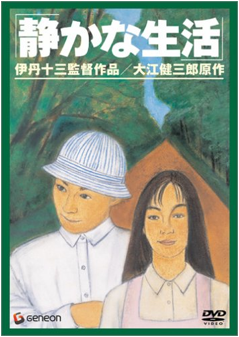
http://asianwiki.com/File:Aquietlife.jpg (Thank you Daniel!)
取り替え子(チェンジリング) The Changling
"Your old novel about the young right-wing activist" (Chapter 2-3 English 128)
This refers to Oe's Seventeen and The Death of Political Youth. The activist in question is Yamaguchi Otoya. He commits suicide while in juvenile penitentiary. (Thank you Daniel!)
取り替え子(チェンジリング) The Changling
Derrida and Barthes" (Chapter 2-3 English 130)
Derrida was focused on deconstructionism, while Barthes wrote "The Death of the Author" (Thank you Daniel!)
取り替え子(チェンジリング) The Changling
Fujio Akatsuka (Chapter 2-3 English 131)
I tried my best to find the exact character Oe was referring to, but I couldn't. I think that it comes from the manga Osomatsu-kun.
(from the reference to the pine tree). 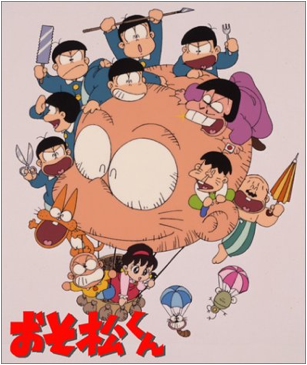
https://upload.wikimedia.org/wikipedia/en/2/20/OsomatsukunDVD.jpg (Thank you Daniel!)
取り替え子(チェンジリング) The Changling
"flash a triumphal V sign" (Chapter 2-5 English 145)
I don't know if this actually means anything, but since we discussed it in class with relation to JINSEI, I think it would be nice to point out the return of the V sign here in CHANGELING. (Thank you Daniel!)
取り替え子(チェンジリング) The Changling
"a condition he described...as 'gout'" (Chapter 3-1, English 167)
Gout: a disease in which defective metabolism of uric acid causes arthritis, especially in the smaller bones of the feet, deposition of chalkstones, and episodes of acute pain.
(Thank you Athena!)
取り替え子(チェンジリング) The Changling
"content of a medium-length book of his" (Chapter 3-1 English 169)
I think this is referring to The Day He Himself Shall Wipe My Tears Away judging from the summary of the novel on Wikipedia. Not 100% sure though. (Thank you Daniel!)
取り替え子 The Changling
"2・26 Incident" (Chapter 3-2 English 183)
From Wikipedia: The February 26 Incident (二・二六事件 Niniroku Jiken?) (also known as the 2-26 Incident) was an attempted coup d'état in Japan on 26 February 1936. It was organized by a group of young Imperial Japanese Army (IJA) officers with the goal of purging the government and military leadership of their factional rivals and ideological opponents. This coup had severe consequences, with increased military control. (Thank you Daniel!)
取り替え子(チェンジリング) The Changling
Inoue Nissho (Chapter 3-2 English 183)
Nissho was a radical Buddhist priest of the Nichiren sect of Buddhism. However he was never officially ordained by the Nichiren sect. His League of Blood consisted mainly of radical university students. They thought that the only way for change to occur was by assassinating elites in power. They are known for the League of Blood Incident where they killed finance minister Junnosuke Inoue and Director General of the Mitsui zaibatsu Baron Dan Takuma. The Wikipedia article are pretty good, but I'm certainly not an expert https://en.wikipedia.org/wiki/Nissho_Inoue https://en.wikipedia.org/wiki/League_of_Blood_Incident (Thank you Daniel!)
取り替え子(チェンジリング) The Changling
Kita Ikki (Chapter 3-2 English 185)
From Wikipedia: A harsh critic of the Emperor system and the Meiji Constitution, he asserted that the Japanese were not the emperor's people, rather the Emperor was the "people's emperor". He advocated a complete reconstruction of Japan through a form of statist, right-wing socialism. Kita was in contact with many people on the extreme right of Japanese politics, and wrote pamphlets and books expounding his ideas (Thank you Daniel!)
取り替え子(チェンジリング) The Changling
"a soaking wet Kogito…looking exactly like a drowned rat" (Chapter 3-3 English 194)
The rat reference comes back. (Thank you Daniel!)
取り替え子(チェンジリング) The Changling
Maruyama Masao (Chapter 3-3 English 195)
Masao's political theories were mainly concerning the prewar militarism and fascism. He was a strong critic of the prewar system. It's ironic how Daio is instead using his theories to advocate for that system instead of denouncing it. (Thank you Daniel!)
取り替え子(チェンジリング) The Changling
"...a novella called His Majesty Himself Will Wipe Away My Tears" (Chapter 3-3, English 197)
I'm not sure why the title is translated differently here. Oe wrote a novella in 1972 called The Day He Himself Shall Wipe My Tears Away (みずから我が涙をぬぐいたまう日). The title itself is a reference, see Bach's Cantata BWV 56 next:
取り替え子 – Bach's Cantata BWV 56 (Chapter 3-3, English 197)The title of Oe's novella, The Day He Himself Shall Wipe My Tears Away, is a reference to the lyrics of Bach's Cantata BWV 56 - Ich will den Kreuzstab gerne tragen (I will gladly carry the Cross). The cantata itself is referred to in the text of the novella, as a group of militants sing it as they march to the city.
Excerpt from http://emmanuelmusic.org/notes_translations/translations_cantata/t_bwv056.htm :
1. Arie B
Ich will den Kreuzstab gerne tragen,
Er kömmt von Gottes lieber Hand,
Der führet mich nach meinen Plagen
Zu Gott, in das gelobte Land.
Da leg ich den Kummer auf einmal ins Grab,
Da wischt mir die Tränen mein Heiland selbst ab.1. Aria B
I will gladly carry the Cross,
it comes from God's dear hand,
and leads me, after my troubles,
to God, in the promised land.
There at last I will lay my sorrow in the grave,
there my Savior himself will wipe away my tears.From Reiko Tachibana's Narrative as Counter-Memory: A Half-Century of Postwar Writing in Germany and Japan (http://www.sunypress.edu/p-2713-narrative-as-counter-memory.aspx):
"Bach's music is surely made strange by this distorted interpretation: music created for church services becomes recontextualized as martial music, and Bach's "Heiland" is equated with the emperor god, who expects the Japanese to die willingly for him. By having patriotic soldiers sing and misinterpret a Western song, and thus making the episode seem thoroughly peculiar, Oe compels readers to reexamine traditional Japanese notions of an "honorable" death,..."
You can listen to it here: https://www.youtube.com/watch?v=Lgk6qUeZW2c
(Thank you Athena!)
取り替え子(チェンジリング) The Changling
Blake's "Child with the wings" (Chapter 3-4 English 210)
I think that the painting being referred to is the one on the right in the following link http://ramhornd.blogspot.com/2013/05/songs-of-innocence-experience-2.html (Thank you Daniel!)
取り替え子(チェンジリング) The Changling
"dumplings made from glutinous rice, pork, and lots of garlic" (Chapter 3-5 English 218)
This is reference to the food in MAN-EN. I just really like these little references and want to point them out. (Thank you Daniel!)
取り替え子(チェンジリング) The Changling
"Cogito, ergo sum" (Chapter 3-5 English 218)
Descarte's fame "I think, therefore I am". Kogito's name as revealed in the book is a direct reference to this phrase. The phrase creates a foundation for the pursuit of TRUTH, which we know that Oe is always trying to struggle with. (Thank you Daniel!)
取り替え子(チェンジリング) The Changling
Nakae Chomin (Chapter 3-5 English 218)
From Wikipedia: His major contribution was the popularization of the egalitarian doctrines of the French philosopher Jean-Jacques Rousseau in Japan. As a result, Nakae is thought to have been a major force in the development of liberalism in early Japanese politics. (Thank you Daniel!)
取り替え子(チェンジリング) The Changling
Rugby Match 1860 (Chapter 4-1 English 229)
A direct reference to MAN-EN! I wonder why the translator decided to translate it directly. (Thank you Daniel!)
取り替え子(チェンジリング) The Changling
Proust's Time Regained (Chapter 4-2 English 238)
It is the seventh and final volume in Proust's In Search of Lost Time. In Proust's world, everyone occupies a range of time due to his or her connection to the past. I think part of Kogito's "Death is Time" comes from this notion of Time. It seems related to the density of time theory we saw in JINSEI (Thank you Daniel!)
取り替え子(チェンジリング) The Changling
Bach's Unaccompanied Partita No. 1 (Chapter 4-4 English 251)
Link: https://www.youtube.com/watch?v=16eLsa8tQww
Personal notes: references to death and time on pg. 253 and 254 (Thank you Daniel!)
取り替え子(チェンジリング) The Changling
Verdi's Quattro Pezzi Sacri(Chapter 4-6 English 265)
Link: https://www.youtube.com/watch?v=K8JnevTX-8Y (Thank you Daniel!)
取り替え子(チェンジリング) The Changling
Grimmeleshausen's Adventures of a Simpleton (Chapter 5-2 English 278)
Also known as Simplicius Simplicissimus. Plot according to Wikipedia: The novel is told from the perspective of its protagonist Simplicius, a rogue or picaro typical of the picaresque novel, as he traverses the tumultuous world of the Holy Roman Empire during the 30 Years War. Raised by a peasant family, he is separated from his home by foraging dragoons and is adopted by a hermit living in the forest, who teaches him to read and introduces him to religion. The hermit also gives Simplicius his name because he was so simple that he did not know what his own name was.[2] After the death of the hermit, Simplicius must fend for himself. He is conscripted at a young age into service, and from there embarks on years of foraging, military triumph, wealth, prostitution, disease, bourgeois domestic life, and travels to Russia, France, and to an alternate world inhabited by mermen. The novel ends with Simplicius turning to a life of hermitage himself, denouncing the world as corrupt. (Thank you Daniel!)
取り替え子(チェンジリング) The Changling
Bakhtin and Rabelais(Chapter 5-2 English 279)
These are the authors who we go to for ideas about carnivalesque and grotesque realism. (Thank you Daniel!)
取り替え子(チェンジリング) The Changling
Henry Ford Hospital and Two Frida (Chapter 5-4 English 295)
Henry Ford Hospital is already on the site under JINSEI, but is worth repeating http://www.fridakahlo.org/henry-ford-hospital.jsp
Here is the link for Two Fridas, including a picture of when it was still not yet finished http://www.fridakahlofans.com/c0290.htm
(Thank you Daniel!)
取り替え子(チェンジリング) The Changling
Rimbaud's Letter to Delehaye (Chapter 5-5 English 304)
I found it in the original French. Hopefully one day someone with more French skills than me can do something with it. http://www.mag4.net/Rimbaud/LettresDelahaye.html (Thank you Daniel!)
取り替え子(チェンジリング) The Changling
fundoshi (Chapter 5-6, English 313)
A traditional Japanese undergarment for men, that was the main form of underwear pre-WWII. (Thank you Athena!)
取り替え子(チェンジリング) The Changling
Pale green, banged-up Cadillac (Chapter 6-1 English 320)
Can someone call up Derek and find this Cadillac. (Thank you Daniel!)
取り替え子(チェンジリング) The Changling
Ornamental pomegranate(Chapter 6-1 English 324)
Link to a picture: http://davesgarden.com/guides/pf/go/165342/ (Thank you Daniel!)
取り替え子(チェンジリング) The Changling
Kafka's Metamorphosis (Chapter 6-4 English 353)
Goro's reference to the man who turned into a bug comes from Kafka's short story, The Metamorphosis. In the story, a man wakes up to find that he has turned into an insect. There actually isn't a translation of the word ungeheur Ungeziefer, so I think it's interesting that Oe posits it as a cockroach (I certainly did when I first read the story). (Thank you Daniel!)
取り替え子(チェンジリング) The Changling
Lindbergh kidnapping (Epilogue 2 English 397)
This is the incident that inspired Sendak's Outside Over There. A young child was abducted from his home, turning up two months later dead. Sendak says that the subtext of the story was his childhood anxiety about the Lindbergh case. (Thank you Daniel!)
取り替え子(チェンジリング) The Changling
Musil's The Man Without Qualities (Epilogue 5 English 417)
From Wikipedia: The novel is a "story of ideas", which takes place in the time of the Austro-Hungarian monarchy's last days, and the plot often veers into allegorical dissections on a wide range of existential themes concerning humanity and feelings. It has a particular concern with the values of truth and opinion and how society organizes ideas about life and society, though the book is well over a thousand pages long in its entirety, and so no one single theme dominates. (Thank you Daniel!)
取り替え子(チェンジリング) The Changling
Urashima Taro (Epilogue 7 English 439)
In the legend, Urashima Taro saves a turtle who turns out to be the daughter of the Emperor of the Sea. He visits the emperor and the turtle, Otohime. He is given a box, which he is told not to open, and returns to land, where he discovers that 300 years have past. He opens the box, which ends up holding his old age.
I think this might tie into Kogito's battle against the turtle back in chapter 6. Perhaps it serves as a contrast to Kogito's actions.
(Thank you Daniel!)
取り替え子(チェンジリング) The Changling
Vick's Caprice (Epilogue 7 English 441)
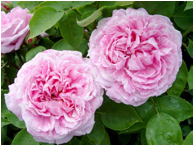
http://www.rossroses.com.au/shopping/images/products/vicks%20caprice.jpg (Thank you Daniel!)
取り替え子(チェンジリング) The Changling
Soyinka's Death and the King's Horseman (Epilogue 9 English 465)
From Wikipedia: based on a real incident that took place in Nigeria during British colonial rule: the horseman of an important chief was prevented from committing ritual suicide by the colonial authorities.[1] In addition to the British intervention, Soyinka calls the horseman's own conviction toward suicide into question, posing a problem that throws off the community's balance. (Thank you Daniel!)
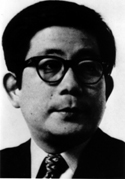
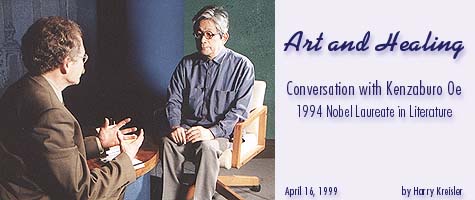
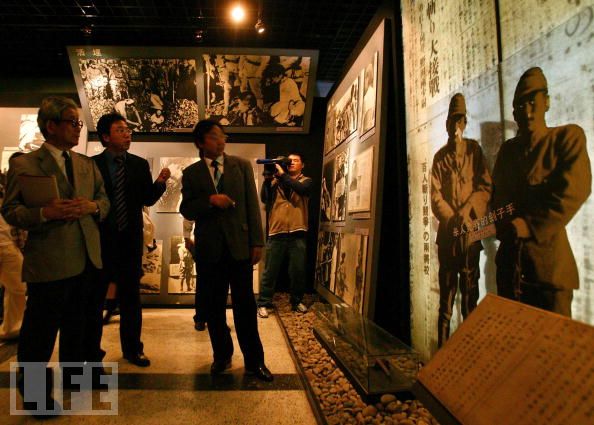
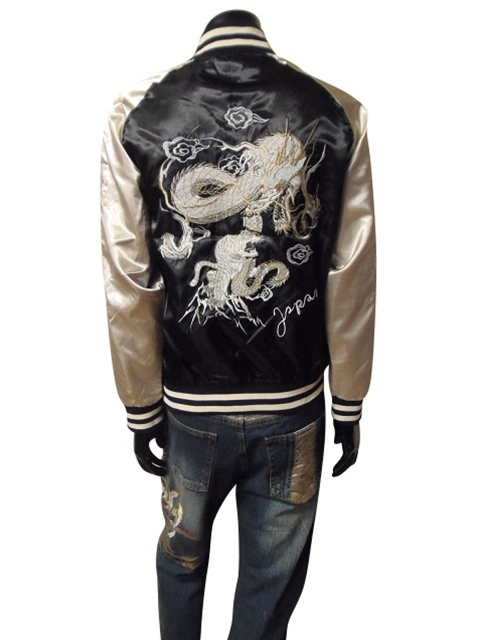
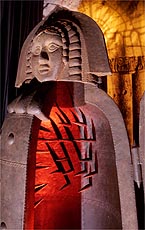
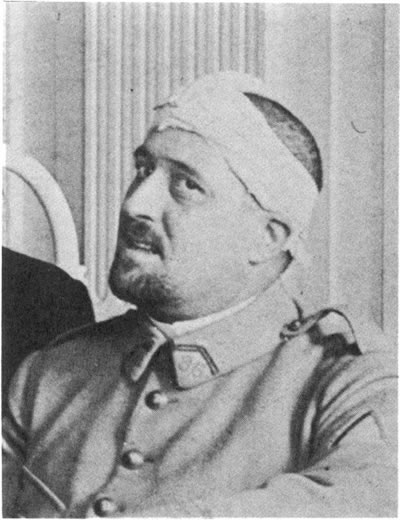
.png)

.jpg)
